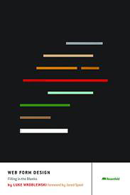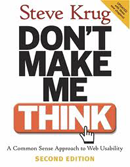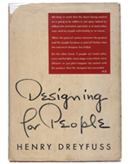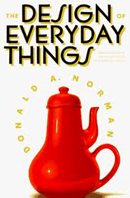We received an amazing amount of tweets and questions following our talk on Design that Drives Action at MozCon yesterday. Many folks asked for books and resources they can use to learn more about the principles behind designs that drive actions. So we decided to put together a quick post recommending some of the books that have helped us learn the craft.
Visual Design
Jakob Nielsen's "Homepage Usability: 50 Websites Deconstructed" focuses on home page design as the most important point of presence of any website. In the book, Nielsen systematically deconstructs 50 of the most popular homepages on the web. He does an amazing job of analyzing each site for it's use of real estate. Each section of all the 50 pages is bulleted and analyzed for potential improvements.
Don Norman's "Design of Everyday Things" does a phenomenal job of entertaining the reader with insights into why some everyday objects satisfy customers while others frustrate them. In most cases people blame the user for not being smart enough to figure out how a product works. As you read through endless examples of poor designs in this book you start to realize the crucial importance small details play in your design. You start to see how important it is to observe people using your product out in the wild.
Content

Maria Valoso's "Website Copy That Sells" is one of the few books that we've photocopied pages from and distributed around the office. It does an amazing job of presenting copy strategies which drive action and have been proven time and again. Some of the techniques are so powerful that we've encouraged our team to use the concepts in our emails.

Jakob Nielsen's "Designing Web Usability" probably fits into all three categories: visual design, content, and forms. It's one of those landmark web usability references every designer has in their library. From content to page design to ease of navigation Nielsen gives you practical advice on how to connect with any web user in any situation.
Forms

Luke Wroblewski's "Web Form Design" is a great primer for any designer who has ever made or is going to make a form online. Luke made it crystal clear in his book, right from the start, the first line of Chapter One, in fact, is: "Forms generally suck." The reason is that it's all your fault. Luke delves deep into the problems most forms on the web have and how to fix them. We loved this book so much that we wrote up a post on it a while back.

It's hard to image anyone working on the Web that has no heard of Steve Krug's "Don't Make Me Think". This book is one of those instant classics when it comes to usability of online products. The book does a great job of showing people how to put themselves in the position of their users. Krug does a pretty good job of going over interface elements that frustrate users and in turn push customers away from online products. All the techniques and examples presented in the book revolve around the idea of a user surfing through a well designed site without much effort or strain.
Bonus

Henry Dreyfuss's "Designing for People" is a book which does not quite fit into a specific category above but is very near and dear to our hearts. Dreyfuss is the mastermind behind the first answering machine, the Hoover vacuum cleaner, the Bell telephone, and many other inventions. In this book Dreyfuss shares professional advice, case studies, history and the very process he used to iterate through ideas and produce these revolutionary products.

